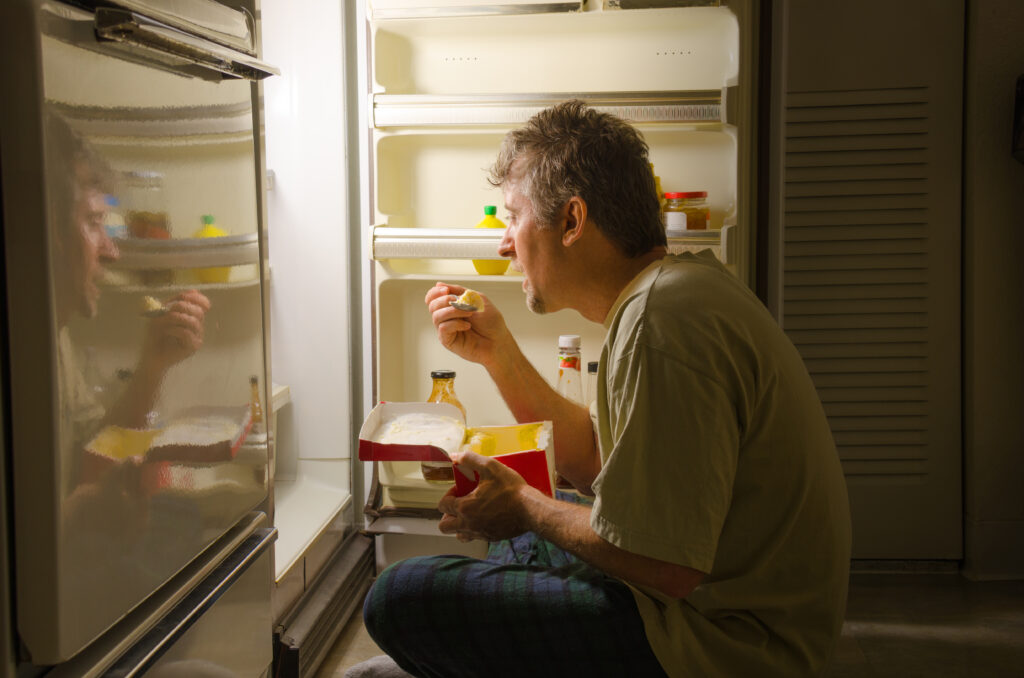Eating Disorders Awareness Week: Breaking Stigmas Through Education and Support
Eating Disorders Awareness Week happens from February 24 to March 2, 2025. This yearly event brings people together to share stories, educate others, and support those affected by eating disorders. The week aims to break the silence around eating disorders and connect people with life-saving resources and support networks.
Each year, millions join this important campaign to spread facts about eating disorders and fight harmful myths. The annual awareness campaign helps people spot early warning signs and learn where to find help.
People with eating disorders often feel alone in their struggle. Through special events, workshops, and online activities during this week, they can find others who understand their experiences. Everyone deserves recovery support, and this week helps make that possible.

Understanding Eating Disorders
Eating disorders are serious mental health conditions that affect millions of people worldwide. They can cause severe physical and emotional harm, but with proper treatment and support, recovery is possible.
Definition and Types
Eating disorders are complex mental health conditions that involve unhealthy eating patterns and distorted thoughts about food, weight, and body image.
Common types include:
- Anorexia Nervosa: Characterized by severe food restriction, intense fear of gaining weight, and distorted body image
- Bulimia Nervosa: Involves cycles of binge eating followed by compensatory behaviors like purging
- Binge Eating Disorder: Recurring episodes of eating large amounts of food with feelings of loss of control
- ARFID: Avoidant/Restrictive Food Intake Disorder marked by limited food intake not related to body image
Prevalence and Mortality Rates
Eating disorders have the second-highest mortality rate among mental health conditions.
An estimated 30 million Americans will experience an eating disorder in their lifetime.
These conditions affect people of all:
- Ages
- Genders
- Racial backgrounds
- Ethnic groups
- Body sizes
- Socioeconomic levels
Risk Factors
Several factors can increase the likelihood of developing an eating disorder:
Biological Factors:
- Family history of eating disorders
- Changes in brain chemistry
- Genetic predisposition
Environmental Triggers:
- Diet culture exposure
- Trauma or abuse
- Social media pressure
- Sports emphasizing weight
Personal Traits:
- Perfectionism
- Low self-esteem
- History of anxiety or depression
Signs and Symptoms
Physical signs:
- Significant weight changes
- Dizziness or fainting
- Dental problems
- Irregular heartbeat
- Sleep issues
Behavioral changes:
- Avoiding meals with others
- Excessive exercise
- Strict food rules
- Frequent bathroom visits after meals
- Food rituals
Emotional indicators:
- Intense fear of weight gain
- Poor body image
- Mood swings
- Social withdrawal
- Anxiety around mealtimes

Challenges and Stigma
People with eating disorders face many barriers to getting help. Social pressures, false beliefs, and shame create roadblocks that stop people from seeking treatment and support.
Breaking the Silence
Many people hide their eating disorders due to feelings of shame and fear of judgment. The fear of being labeled “attention-seeking” or “vain” keeps countless individuals from speaking up about their struggles.
Cultural expectations around food, weight, and body image make it harder to come forward. Speaking openly helps reduce isolation and shows others they aren’t alone.
Medical professionals sometimes miss the signs due to stereotypes about who gets eating disorders. This leads to delayed diagnosis and treatment.
Myths versus Facts
Common Myths:
- Only teenage girls get eating disorders
- It’s just a phase or choice
- You can tell if someone has an eating disorder by looking at them
- Recovery is impossible
Facts:
- Eating disorders affect people of all ages, genders, and backgrounds
- They are serious mental health conditions
- Many people with eating disorders maintain a “normal” weight
- Full recovery is possible with proper support
Societal Impact
The effects of eating disorders reach far beyond individuals. These conditions have the second-highest mortality rate among mental illnesses.
Healthcare costs and lost productivity create a significant economic burden. Family relationships often suffer as loved ones struggle to understand and help.
Media messaging and social media continue to promote unrealistic body standards. This creates a cycle that makes prevention and recovery more difficult.
Support groups and community education programs help combat isolation and misinformation. Early intervention improves outcomes and saves lives.
The Impact of Awareness
Public education and community involvement play vital roles in fighting eating disorders. Through targeted campaigns and collective action, awareness efforts help identify signs early and connect people to life-saving care.
Importance of EDAW
National Eating Disorders Awareness Week creates crucial visibility for a serious health issue that affects millions. The campaign reaches people who might not otherwise seek help.
Early detection saves lives. When people learn about warning signs, they can spot problems sooner.
Schools, healthcare providers, and community groups use EDAW materials to:
- Screen for eating disorders
- Share treatment resources
- Break down stigma
- Start important conversations
Role of Education and Community
Community education programs unite students, teachers, parents, and healthcare workers to create support networks.
Local events during EDAW help people:
- Connect with treatment options
- Learn from others’ experiences
- Find support groups
- Access screening tools
Schools play a key role in training staff to recognize warning signs. Teachers and counselors who interact with students daily, often spot early symptoms.
Support groups and community organizations provide year-round resources that extend beyond awareness week. Their work helps ensure people know where to turn for help.

Support and Resources
Getting help for eating disorders involves connecting with trusted organizations, finding the right treatment options, and building a strong support network. Multiple paths to recovery exist, with many dedicated professionals and groups ready to help.
Organizations and Advocacy
The National Eating Disorders Association (NEDA) is a leading resource for eating disorder support and education. Its helpline provides free, confidential guidance 24/7.
Project HEAL offers financial assistance and support programs for those seeking treatment. They connect people with treatment scholarships and insurance navigation help.
Local eating disorder organizations often host support groups and educational workshops. These meetings create safe spaces for people to share experiences and learn recovery skills.
Finding Treatment and Support
Treatment options include outpatient therapy, intensive outpatient programs, residential care, and hospital programs. A healthcare provider can help determine the best level of care.
Many treatment centers offer specialized programs for different age groups and specific eating disorders. They typically provide medical care, nutrition counseling, and therapy.
Insurance companies now must cover eating disorder treatment. Treatment centers often have staff who can help verify insurance coverage and explain payment options.
Support for Loved Ones
Family and friends play a crucial role in recovery. Learning about eating disorders helps loved ones provide informed, compassionate support.
Support groups for families give parents, siblings, and partners a place to share concerns and learn coping strategies. Many treatment centers offer family therapy sessions.
Simple ways to show support include:
- Listening without judgment
- Avoiding comments about food, weight, or appearance
- Encouraging professional help
- Being patient with the recovery process
Eating Disorders Awareness Week 2025
Eating Disorders Awareness Week 2025 runs from February 24 through March 2. The week-long campaign aims to educate people about eating disorders and support those affected.
Events and Campaigns
The National Eating Disorders Association organizes daily virtual events throughout the week. These online gatherings connect people from across the country.
To raise awareness, the Beacon of Hope lighting campaign turns buildings blue and green. Major landmarks and local buildings participate to show support.
Campus Warriors lead activities at colleges and universities. Students organize walks, information sessions, and support meetings.
EDAW 2025 Highlights
On February 26, medical professionals will host an expert-led workshop on autism and eating disorders. The workshop will discuss new research and treatment approaches.
Social media campaigns share stories of recovery and hope. People post using #EDAW2025 to spread awareness.
Virtual support groups meet daily to provide safe spaces for those affected by eating disorders.
Getting Involved
People can join the EDAW community in several ways:
- Volunteer at local EDAW events
- Start a fundraising campaign
- Share educational resources on social media
- Attend virtual support meetings
- Organize awareness activities in schools or workplaces
Local organizations welcome volunteers to help plan and run events. Every action helps break the silence around eating disorders.
Advancing Recovery
Recovery from eating disorders requires a mix of personal commitment, community backing, and proper medical care. Early detection and access to help make a real difference in healing outcomes.
Personal Journeys
Recovery stories show that healing is possible. Each person’s path looks different, shaped by their unique experiences and needs.
Support groups and therapy sessions provide spaces to share struggles and victories. Many people find strength in connecting with others who understand their challenges.
Key Recovery Steps:
- Setting realistic health goals
- Building a support network
- Working with medical professionals
- Developing healthy coping skills
- Celebrating small wins
Community and Empowerment
Eating disorders thrive in silence, which makes community support vital. Group activities and shared experiences create bonds that aid recovery.
Local support meetings offer safe spaces for people to share their stories. These gatherings help break isolation and build lasting connections.
Family and friends play important roles in the recovery process. Their understanding and patience make a big difference.
Tools for Early Detection
Professional screening tools help identify eating disorders quickly. Regular check-ups with healthcare providers can spot warning signs early.
Warning Signs to Watch:
- Changes in eating patterns
- Social withdrawal
- Extreme exercise habits
- Mood changes
- Physical symptoms
Medical professionals use specific questionnaires to assess risk levels. Early intervention leads to better outcomes and faster recovery times.

Special Considerations
Raising awareness about eating disorders requires addressing specific groups and challenges. Medical providers, coaches, and families need tailored education and support to help those affected.
Focus on Women and Girls
Girls and women face intense societal pressures around body image and food. Social media, fashion trends, and cultural ideals create unrealistic expectations that can trigger disordered eating patterns.
The risks start early. Girls aged 10-14 show increasing rates of eating disorders. Athletic teams, dance programs, and competitive activities need special monitoring and support systems.
Parents and educators must watch for warning signs:
- Extreme dieting or food restrictions
- Excessive exercise
- Negative self-talk about weight
- Social withdrawal around meals
Eating Disorders in Midlife
Women in midlife experience unique challenges with eating disorders. Physical changes and life transitions can spark new struggles or reactivate past issues.
Hormonal shifts during perimenopause and menopause affect metabolism and body composition. Career stress, family responsibilities, and aging concerns create additional pressure.
Warning signs in midlife differ from younger populations:
- Rigid exercise routines
- Extreme focus on “clean eating”
- Body checking behaviors
- Secret eating habits
Supporting Professionals
Healthcare providers need specialized training to identify and treat eating disorders effectively. Early detection saves lives.
Medical professionals, including primary care doctors, dentists, and mental health providers, should screen patients regularly for eating disorder symptoms.
Key support roles include:
- School counselors
- Athletic trainers
- Nutrition specialists
- Mental health therapists
These professionals need updated education on treatment approaches and referral networks. Regular training helps them stay current with best practices.
Beyond Awareness
Raising awareness leads to real changes through scientific progress and community action. Getting proper support makes a big impact on recovery outcomes.
Research, Development, and Hope
Current eating disorder research focuses on brain chemistry and genetic factors. Scientists have identified several genes linked to anorexia and bulimia, opening new paths for treatment.
Studies also examine how social media affects body image and eating behaviors. This helps create better prevention programs and support systems.
New treatments combine therapy, nutrition, and medication. Early intervention programs show promising results in helping people recover faster.
Long-term Goals
The eating disorder treatment field aims to make care more accessible to everyone. Major efforts focus on reducing treatment costs and expanding insurance coverage.
Training more specialists helps meet the growing demand for care. Medical schools now include more eating disorder education in their programs.
Prevention remains a key priority. Schools and healthcare providers work together to spot warning signs early.
Support groups and recovery communities keep growing stronger. They help people stay on track after completing treatment programs.

